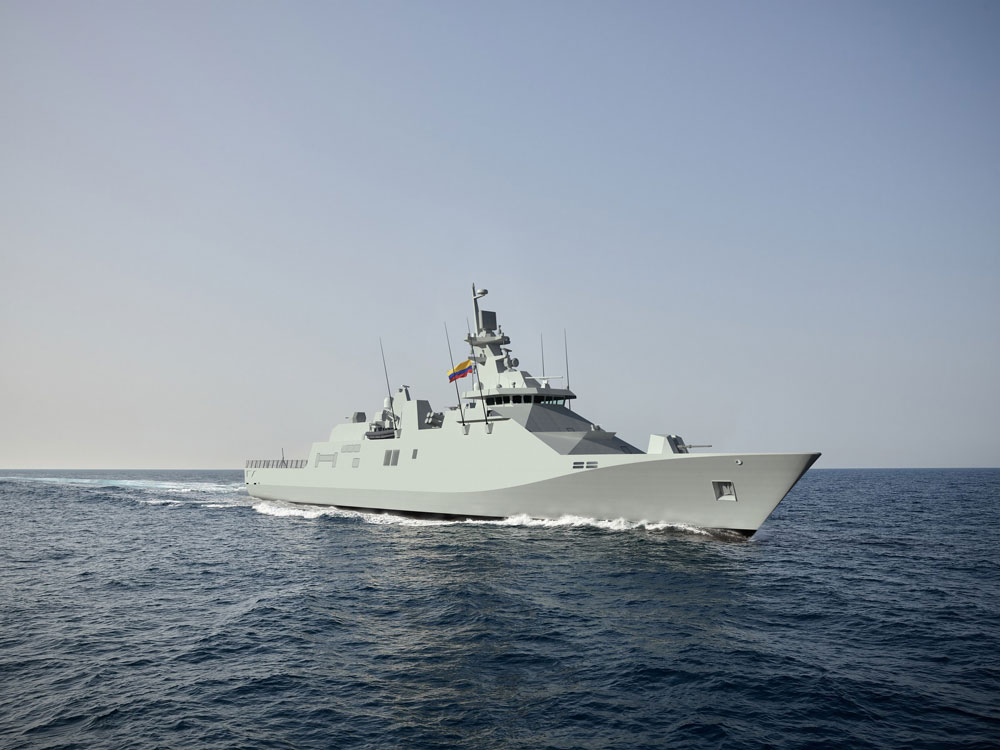Read the latest news stories from our flagship publication The Naval Architect, which covers developments in maritime, from superyachts and short-hop ferries to wind propulsion and cyber security.
Frigate-building first for Colombia
5th Aug 2025

The Colombian Navy has embarked on an ambitious project to build a new class of frigates in Colombia, in so doing becoming only the third South American country, after Brazil and Mexico, to build ships of this type.
The frigate programme, which dates back to 2007, forms part of an ambitious programme agreed between the Colombian Navy and Cartagena-based COTECMAR for the construction, integration, testing and commissioning of: the first ‘Plataforma Estratégica de Superficie (PES)’/strategic surface platform frigate; an ‘oceanic patrol vessel’ that is currently under construction; and a logistic support vessel. The three ship types form part of the Colombian Navy’s 2042 Naval Development Plan that will upgrade its fleet and, it is hoped, create thousands of jobs in the country, strengthening Colombia’s defence industry and self-sufficiency.
Based on Damen’s SIGMA 10514 design, previously built for Indonesia and Mexico, the PES frigates will replace the Colombian Navy’s ageing Amirante Padilla-class frigates, and will be built in Colombia with technical support from the Dutch yard. Following completion of the initial contract with COTECMAR, Damen Naval in August 2024 signed a contract for the delivery of engineering, technical support and shipbuilding materials and equipment for the first frigate in what is expected to be class of five vessels. Construction of the first frigate at COTECMAR is due to get underway by the end of 2025, and delivery and commissioning is due to take place in late 2029 or early 2030.
Shortly after the construction contract was agreed, Damen Naval also agreed a contract with class society Lloyd’s Register (LR) for full plan approval for the PES. A number of contracts have recently been confirmed with leading suppliers for systems and equipment for the frigates. Damen Naval has agreed a contract with Nevesbu for the platform engineering for the PES frigates, and Swedish defence firm Saab will provide the combat management system (CMS) for the first of the new frigates, under which it will fit the PES with systems including Sea Giraffe 4A radars, 9LV combat management and fire control systems, a Ceros 200 radar and optronic tracking system, plus EOS 500 electro-optical fire-control directors.
In June 2025, Kongsberg Maritime signed a contract with Damen Naval to supply twin controllable-pitch propellers and shaftlines for the vessels. At about the same time, Alewijnse was awarded a contract for the design, engineering and testing of all onboard electrical systems, a deal that includes full cable routing across the vessel and the supply of key systems such as power management, propulsion, entertainment and navigation lighting. Alewijnse will provide the drives for the frigate’s propulsion system in partnership with Van Meer, a longstanding partner of Damen Shipyards. It will also supply the ship’s integrated platform management system, which will be developed and delivered in cooperation with Praxis Automation, and integrated bridge management system, which will be supplied in collaboration with Anschütz.
With a length overall of 107.5m and a beam of 14.02m, the frigates will enhance the Colombian Navy’s anti-submarine and anti-surface vessel capability and its ability to project power in the region. Displacing 2,808tonnes, the newbuilds will have a crew of around 100 and range of up to 8,200nm. They will have a maximum speed of 26knots and a combined diesel or electric (CODOE) propulsion system based on two 10MW diesel engines and electric motors, and one 200kW and four 940kW diesel generators.
Relatively few details have been confirmed about the frigates’ weapon systems, although they are expected to be fitted with a vertical launch system for air defence missiles, and with surface-to-surface missiles. BAE Systems will provide the Bofors 40 Mk4 main gun for the vessels, which will form part of their anti-air and anti-surface vessel capability.